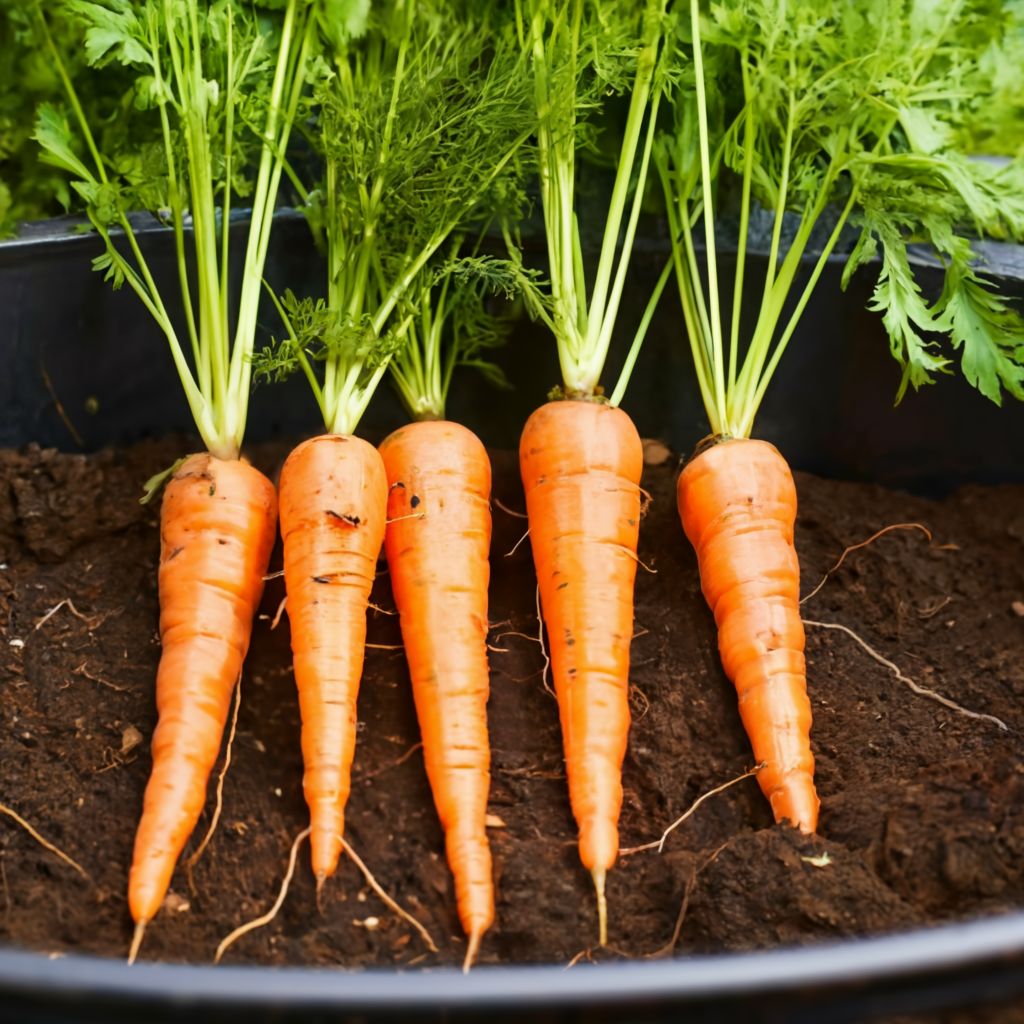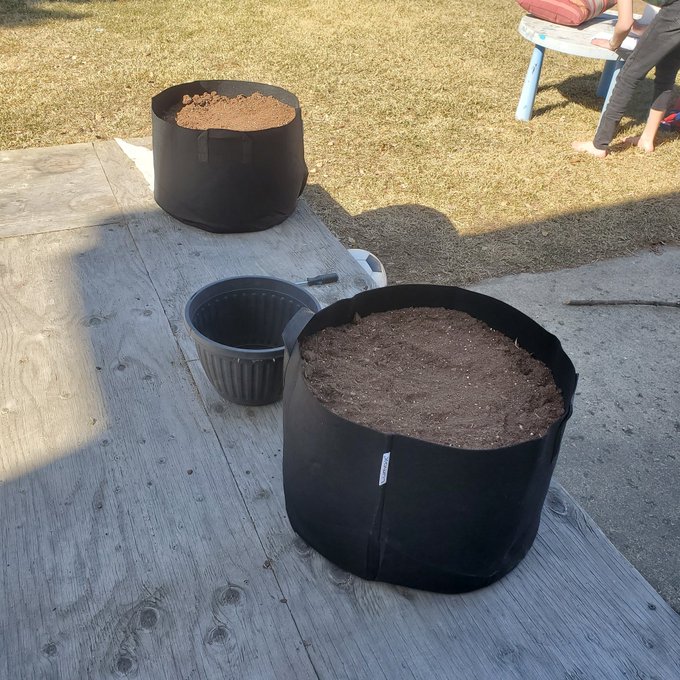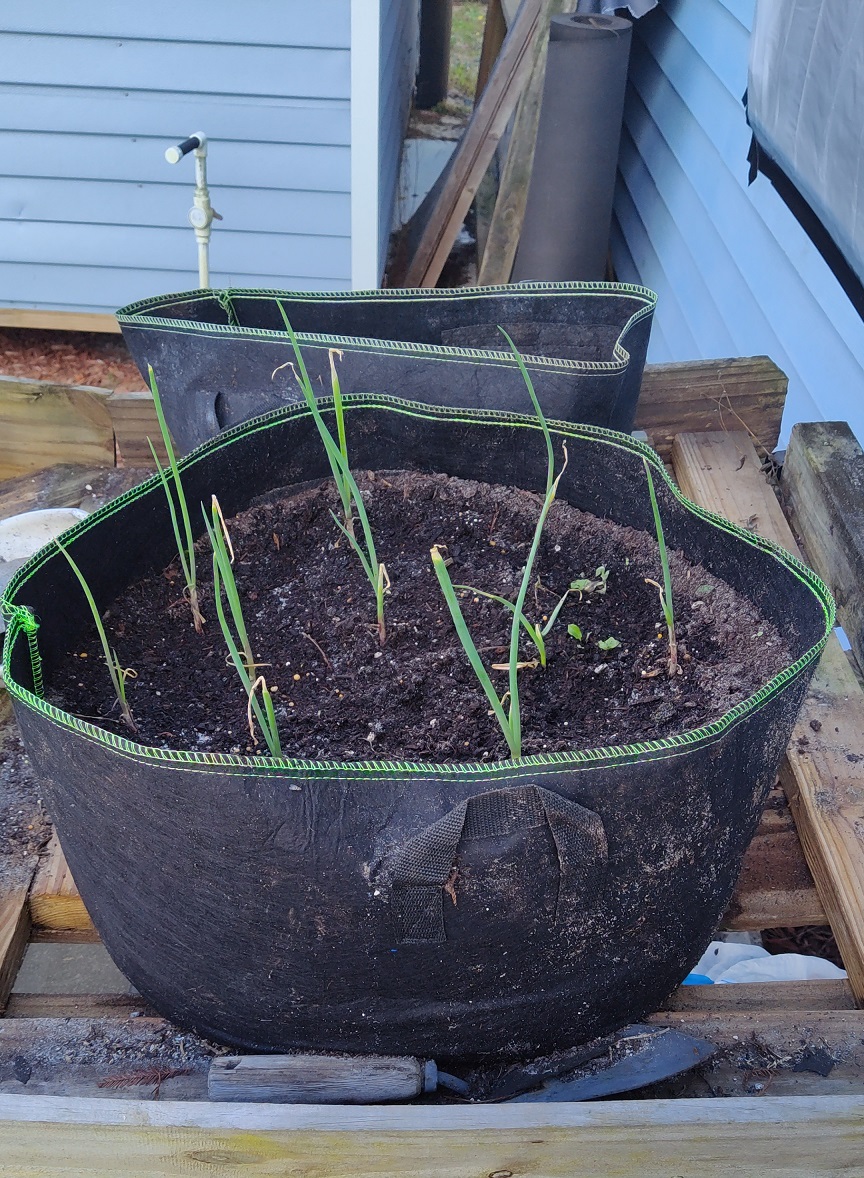
Ever dreamt of harvesting a forest of vibrantly orange carrots, straight from your balcony? Well, dream no more! Grow bags offer a surprisingly potent solution for cultivating these delightful root vegetables, even in compact spaces. But unlocking their full potential requires a touch of carrot-whispering magic – and that’s where our bag of tricks comes in.
This guide unveils a treasure trove of hacks designed to transform your grow bag into a haven for thriving carrot crops. From selecting the perfect bag and soil to outsmarting pesky pests, we’ll equip you with the knowledge to nurture a bounty of delicious, homegrown carrots.
This post may have affiliate links. This means that sometimes when you click a link on our site and make a purchase on Amazon, we may earn a small commission at no additional cost to you. We only recommend products we truly believe in, and your support helps keep us running!
Choosing the Perfect Grow Bag: A Foundation for Success

Just like Goldilocks and her porridge, picking the right size grow bag is crucial. Here’s how to find the “just right” fit:
- Size Matters: Carrots crave depth for their taproots to develop. Opt for grow bags that are at least 12 inches deep and ideally, 18 inches for longer carrot varieties. Aim for a diameter of 15-20 inches to provide ample space for multiple carrot plants.
- Fabric Fantastic: Sturdy yet breathable fabric is key. Non-woven polypropylene bags are popular choices, allowing for excellent drainage and root aeration. Avoid plastic bags that can trap moisture and hinder growth.
- Drainage is King: Ensure your grow bag boasts drainage holes at the bottom. Excess water can lead to root rot, so proper drainage is paramount.
Crafting the Dream Carrot Mix: A Symphony of Soil

The foundation for flourishing carrots lies in the soil. Here’s how to create a mix that sings to their roots:
- The Base: High-quality, well-draining potting mix forms the base. Look for a mix specifically formulated for vegetables or containers.
- The Sandy Secret: Carrots prefer loose, aerated soil. Amend your potting mix with coarse sand (20-30%) to enhance drainage and prevent root compaction.
- The Nutrient Boost: For an extra oomph, incorporate organic compost (around 10%) for sustained nutrient release.
Pro Tip: Avoid using garden soil directly in grow bags. It can be dense and harbor unwanted pests or diseases.
Sowing Seeds for Success: A Sprout’s Journey
Now comes the exciting part – planting your precious seeds! Here’s how to usher in a generation of thriving carrots:
- Timing is Everything: Plant your carrot seeds in the cool season, ideally 4-6 weeks before the last frost in spring. Alternatively, sow seeds in late summer/early fall for a fall harvest in warmer climates.
- Seeding Strategy: Refrain from sowing seeds in a dense cluster. Aim for rows spaced 2-3 inches apart. Within each row, scatter seeds about ½ inch deep and roughly 1 inch from each other.
- Light Matters: After sowing, cover the seeds lightly with a thin layer of vermiculite or sand to retain moisture and promote germination. Keep the grow bag in a location with good access to sunlight (around 6 hours daily).
- The Gentle Touch: Water the seeds gently with a mister or watering can with a rose attachment to avoid disturbing the delicate seeds.
Note: Thinning is crucial later on. Once seedlings reach about 2-3 inches tall, gently thin them to a final spacing of 2-3 inches between each plant.
Watering Wisdom: Keeping Your Carrots Hydrated
Consistent moisture is vital for carrot growth, but overwatering can be disastrous. Here’s the art of striking the perfect balance:
- The Finger Test: Become a master of the finger test! Stick your finger into the top inch of soil. If it feels dry to the touch, it’s time to water.
- Deep and Infrequent: Aim for deep watering sessions that soak the soil thoroughly, allowing excess water to drain freely from the grow bag’s bottom holes. Avoid shallow, frequent watering that only wets the topsoil.
- Mulch Magic: Apply a layer of organic mulch (like chopped straw or shredded leaves) around the base of your plants. Mulch helps retain moisture, regulate soil temperature, and suppress weeds.
Heads Up: Be mindful of watering during extremely hot weather. Increased evaporation might necessitate more frequent watering, but always prioritize deep watering over frequent shallow soaks.
Sunshine Savvy: The Power of Light
- Position your grow bag in a location that receives at least 6 hours of direct sunlight daily. South-facing balconies or patios are ideal.
- Rotate for Balance: As your carrots grow, rotate the grow bag periodically to ensure even sunlight distribution. This prevents them from leaning towards the light source and promotes straighter, more uniform growth.
Not So Sunny? Don’t fret! If full sun isn’t readily available, some dappled sunlight or 4-5 hours of direct sun can still produce decent yields. However, be mindful that growth might be slower, and carrots may not reach their full potential size.
Feeding Frenzy: Nourishing Your Carrot Patch
Just like us, carrots need a balanced diet to thrive. Here’s how to keep them fueled for optimal growth:
- The Slow and Steady Approach: Opt for a slow-release organic fertilizer formulated for vegetables. Follow the package instructions for application frequency and dosage. Overfertilizing can harm your carrots and impact the flavor.
- The Power of Compost Tea: For an extra nutrient boost, consider brewing and applying compost tea every few weeks. This liquid fertilizer provides a readily available source of nutrients for your carrots.
- The Calcium Conundrum: While not strictly necessary, some gardeners recommend incorporating a sprinkle of crushed eggshells or a calcium supplement occasionally. This can help prevent a condition called “hollow heart” in carrots, where the core develops air pockets.
Befriending the Good Guys: Encouraging Beneficial Bugs
Your grow bag isn’t just a haven for carrots – it can attract a whole ecosystem of minibeasts. Here’s how to attract the good guys and keep the bad guys at bay:
- Ladybugs, Welcome!: Plant companion flowers like marigolds or nasturtiums near your grow bag. These vibrant blooms attract ladybugs and other beneficial insects that prey on harmful pests like aphids.
- The Power of Scent: Scatter fragrant herbs like rosemary, thyme, or basil around your grow bags. Their strong scent can deter some unwanted pests.
Outsmarting the Sneaky Intruders: Keeping Pests at Bay
Unfortunately, not all minibeasts are welcome guests. Here’s how to deter unwanted visitors:
- Row Covers: Consider using row covers made of breathable fabric to create a physical barrier against carrot flies and other flying pests.
- The Diatomaceous Earth Defense: Diatomaceous earth is a natural, non-toxic powder that can be dusted around the base of your plants to deter crawling insects like slugs and cutworms.
- The Spray Solution: For a more targeted approach, use organic insecticidal sprays like neem oil or insecticidal soap to control specific pest outbreaks. Always follow the instructions on the product label carefully.
Note: Early detection is key! Regularly inspect your carrots for signs of pest damage and intervene promptly to minimize the impact.
